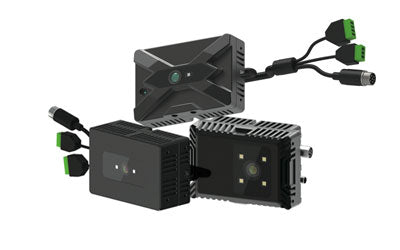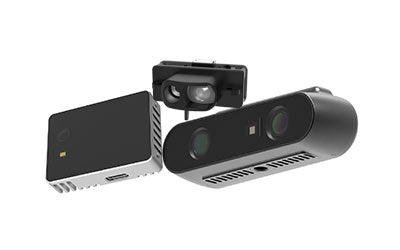Comparison between TOF sensors and other types of distance sensors

Distance sensors are an essential technology for many modern applications, from robotics and automation to automotive and healthcare. Two popular types of distance sensors are TOF (Time-of-Flight) sensors and other types of distance sensors such as ultrasonic sensors and infrared sensors. In this article, we will compare TOF sensors and other types of distance sensors in terms of their working principles, advantages, and disadvantages.
Working Principles
TOF sensors work by emitting a pulse of light and measuring the time it takes for the light to travel from the sensor to the object and back again. They use the speed of light to calculate the distance between the sensor and the object accurately. On the other hand, ultrasonic sensors emit high-frequency sound waves and measure the time it takes for the sound waves to bounce back from the object. Infrared sensors work by emitting infrared light and measuring the amount of light that is reflected back from the object.
Advantages of TOF Sensors
TOF sensors offer several advantages over other types of distance sensors. Firstly, they offer high accuracy and precision, with measurements in millimeters or even micrometers. Secondly, they work well in a wide range of lighting conditions and can even work in complete darkness. Thirdly, they have a fast response time, making them ideal for applications that require real-time measurements.
Disadvantages of TOF Sensors
One of the main disadvantages of TOF sensors is that they are relatively expensive compared to other types of distance sensors. Additionally, they have a limited range, typically up to a few meters. Finally, they require high-quality optics to ensure accurate measurements.
Advantages of Ultrasonic Sensors
Ultrasonic sensors have several advantages over other types of distance sensors. Firstly, they have a longer range than TOF sensors, typically up to 10 meters. Secondly, they are relatively inexpensive compared to TOF sensors. Thirdly, they are not affected by color or texture, making them ideal for applications where the object's surface properties vary.
Disadvantages of Ultrasonic Sensors
One of the main disadvantages of ultrasonic sensors is that they can be affected by temperature, humidity, and other environmental conditions, which can affect their accuracy. Additionally, they have a lower accuracy than TOF sensors, typically in the range of a few centimeters. Finally, they have a slower response time than TOF sensors, making them unsuitable for applications that require real-time measurements.
Advantages of Infrared Sensors
Infrared sensors offer several advantages over other types of distance sensors. Firstly, they are relatively inexpensive compared to TOF sensors. Secondly, they work well in a wide range of lighting conditions, including complete darkness. Finally, they have a longer range than ultrasonic sensors, typically up to a few meters.
Disadvantages of Infrared Sensors
One of the main disadvantages of infrared sensors is that they can be affected by the surface properties of the object, making them unsuitable for applications where the object's texture or color varies. Additionally, they have a lower accuracy than TOF sensors, typically in the range of a few centimeters. Finally, they have a slower response time than TOF sensors, making them unsuitable for applications that require real-time measurements.
Conclusion
In conclusion, TOF sensors offer high accuracy and precision, work well in a wide range of lighting conditions, and have a fast response time. However, they are relatively expensive and have a limited range. Ultrasonic sensors have a longer range and are relatively inexpensive, but they are affected by environmental conditions and have a slower response time. Infrared sensors are relatively inexpensive, work well in low-light conditions, and have a longer range, but they are affected by surface properties and have a lower accuracy. Choosing the right type of distance sensor depends on the specific requirements of the application.
Comparing Distance Measurement Sensors: ToF, Ultrasonic, and Infrared
ToF sensors are widely used for distance measurement due to their high precision and real-time performance. By emitting a light pulse and measuring the time it takes to return, Time of Flight (ToF) technology allows for accurate distance calculation. These sensors are ideal for camera systems, providing 3D depth maps for applications like robotics, automotive, and security.
In comparison, ultrasonic sensors use sound waves and offer a longer range, but they are less accurate and affected by environmental factors. Infrared sensors, on the other hand, rely on reflected light and are cost-effective, though they struggle with surface texture and color variations.
While ToF sensors provide superior accuracy and work well in low-light conditions, they are more expensive and have a shorter range. The choice between these sensors depends on the specific needs of the application, including cost, range, and accuracy.
Synexens 3D Of RGBD ToF Depth Sensor_CS30

Our professional technical team specializing in 3D camera ranging is ready to assist you at any time. Whether you encounter any issues with your TOF camera after purchase or need clarification on TOF technology, feel free to contact us anytime. We are committed to providing high-quality technical after-sales service and user experience, ensuring your peace of mind in both shopping and using our products.
-
Posted in
CS30


